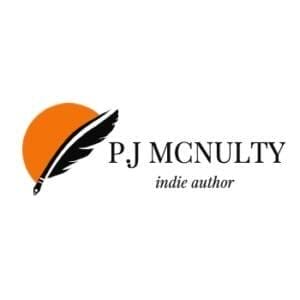The key to writing a memorable and engaging novel is to focus first on these 7 basic elements of fiction that make up the building blocks of your book.
Book-writing can feel like a daunting task when you’re staring at a blank piece of paper and trying to figure out where to start writing. But when writers spend time developing those essential elements of fiction, book writing suddenly feels much more intentional, planned out, and manageable.
Before you sit down to start developing your fictional world from scratch, take time to develop these 7 essential elements of fiction your novel will need to make it memorable and engaging.
Here are the 7 elements of fiction your novel should include:
Characters
What would a story be without characters?
One of the best parts of being a book lover is rooting for your favorite hero and wishing nothing but ill on those who oppose them. Good characters draw us in, grow and deepen throughout a story, and make us care about them and their lives. You can’t have an engaging story with boring characters.
When it comes to characters, make sure to include:
- Main character. Will your story have a single protagonist, or more? Will they be a classic hero or more of an antihero type? What are the things that motivate and drive them? What is their background? What is standing in the way of them achieving what they want?
- Antagonist. Just as your readers need someone to cheer for, they need someone to dislike. Will it be a classic villainous archetype? A love rival? Or what about someone opposing them despite being on the same side of a struggle, conflict, or cause?
- Supporting characters. When it comes to characters outside of the main protagonist and antagonist, it’s important to strike a balance between keeping things interesting for the reader and making sure everyone in the story serves a purpose. Ideally, supporting characters should have some depth, rather than just being shallow stereotypes.
Often, the most engaging characters are ones that are not purely good or evil, but instead ones that are real, engaging, and make us believe they truly exist. Memorable characters do not always behave how we want them to behave, but instead, start to have a life of their own.
Before you begin your book, spend time developing who your characters are in their everyday lives before you take them out of the normal and into the adventure of your book. Let them grow and change throughout the adventure.
Conflict
Although most of us crave peaceful and straightforward stories in our own lives, no one wants to read about a character’s pleasant day! To keep readers interested, your tale needs to have twists, turns, and bumps in the road.
So what’s the key to making that happen?
Introduce conflict to your fictional world.
Conflict is one of the elements of fiction that keeps your story moving, pushes your characters into the unknown, and keeps your readers engaged.
Here are three ways to use conflict to either advance your story or give your readers insights into the motivations behind your characters:
- Character against character conflict. The most obvious type of conflict is when characters clash against each other. This might be a black and white conflict such as the hero VS villain scenario or it could be a but more grey, such as when two rivals compete against each other for a cause.
- Conflict against injustice. Your story could center around a large scale injustice, such as a corrupt society, government, or corporation. Or it might be a more personal struggle, such as a character’s quest to seek revenge for a perceived injustice.
- Internal conflict. Some of the best stories stem from a character’s internal conflict. Showing a protagonist grappling against two sides of their own nature can be a powerful way to create tension in your story.
Without the right use of conflict as a story element, your tale runs the risk of leaving readers bored and disappointed.
Plot
Of all the elements of fiction to consider, plot is one of the most important. While it’s virtually impossible to have a novel without some kind of plot, it’s definitely possible to ruin your story with the wrong one.
The basic concept of a plot is easy to understand. It’s simply the series of events that occur over the course of your story. Although there are many different types of plot your story can employ, there are commonalities between most plot types. One of the most common plot structures is the hero’s journey.
If you’re an experienced story writer, you probably already have a preference when it comes to plotting or pantsing. These are the two most common ways of plotting a story:
- Plotting involves methodically planning out how your story will progress.
- Pantsing involves freestyling and letting your plot evolve on the fly.
You might want to employ a simple three-act structure, or opt for something a little more complicated. No matter which story structure you end up choosing, make sure it’s a good fit for your story and the journey you want your readers to experience.
Point of View
Choosing a point of view is a key element of your story creation process. Your choice of who tells the story—the voice of the story—directly determines the way a reader will experience your plot and characters.
But what are your options when it comes to point of view? How should you choose between them?
The three main ways to tell a story:
- First person point of view. Uses ‘I’ or ‘we’ to convey your story.
- Second person point of view. Uses ‘you’ to speak to the reader directly.
- Third person point of view. Uses ‘he’, ‘she’, or ‘they’.
With that brief refresher on points of view out the way, let’s take a look at how each point of view impacts your story and how readers experience it.
A story written in the first person creates a sense of closeness between the story and the person reading it. Be warned that a story in this point of view limits the amount of information the narrator is able to share. Sometimes authors will get around this restraint by switching the point of view between characters, giving the readers a multi-faceted picture of the story.
The second person is a rare choice for a full novel. It’s more commonly found in nonfiction, copywriting, and informational content. However, when the second-person perspective is in the right hands, it can evoke an intense reading experience. Check out the work of Mohsin Hamid for excellent examples.
The third-person point of view is probably the most widely-adopted point of view and works will with many different book styles and genres.
When it comes to using the third person point of view, you have two choices.
- Third person limited. Allows information to be shared from the perspective of one character only. What they know, think, and feel is the limit of what the reader can know.
- Third person omniscient. Allows any type of information to be shared with the reader at any time.
The point of view you choose is an important element of your story. Choose carefully to make sure your reader has the right experience.
Resolution
If you’ve ever been let down by the ending of a book or a movie, you know how important the ending is to a story. The wrong ending and your readers leave your book disappointed and unwilling to recommend the book to others, even if they enjoyed the book up until the end.
So how can you make sure your resolution doesn’t end up being a dud?
Ideally, you want your ending to tie up the loose threads of your story. If your reader has become emotionally invested in a character or storyline, and the ending doesn’t give them enough attention, be ready for annoyed reviewers. Most importantly, your resolution should bring your main character arcs to a satisfying finish.
The most important aspect of a good resolution is to leave some kind of emotional impact on your reader. They should feel moved, shocked, or some other strong emotional response. When your story finishes on a powerful emotional note, readers are more likely to leave good reviews, give a word of mouth recommendation, or progress from being a reader to being an outright fan of your work, hungry for more.
Setting
While the setting is usually not considered one of the most important elements of fiction, it can be a powerful aspect of your book when it is used well. Many novels weave the characters and plot into the setting, creating a story that couldn’t have taken place in any other setting.
Two examples of when the setting is tied expertly to the plot are the Overlook Hotel in The Shining and the Hogwarts School in Harry Potter. Both of these settings became so important to these stories, they are as memorable as the characters themselves.
Avoid the temptation to give too much description or detail when it comes to the setting of your story. In most books, a little bit goes a long way. It’s often better to plant a hint or subtle seed of the setting in your use of language and then let your reader’s mind’s eye do the rest.
Theme
Your story’s theme relates to its deepest message and meaning.
While a plot covers the events that take place, the theme is more concerned with the message you are trying to get across.
It’s not uncommon for stories to touch on multiple themes, but there is often a core or primary theme running through the heart of the narrative.
So what are some examples of common themes that successful stories contain?
- Forces of light winning against those of darkness
- Love triumphing over hate
- Endurance against tough circumstances
Find an appropriate theme for the story you want to tell, and weave this element in your words subtly as you write.
Next Steps in Implementing the Elements of Fiction
Remember, the key to a memorable book isn’t rocket science. Instead, spend time developing your story elements and weave those together in your book. If you need more help, let us know!
Check out this character development guide and this tool that helps you plot your novel.




